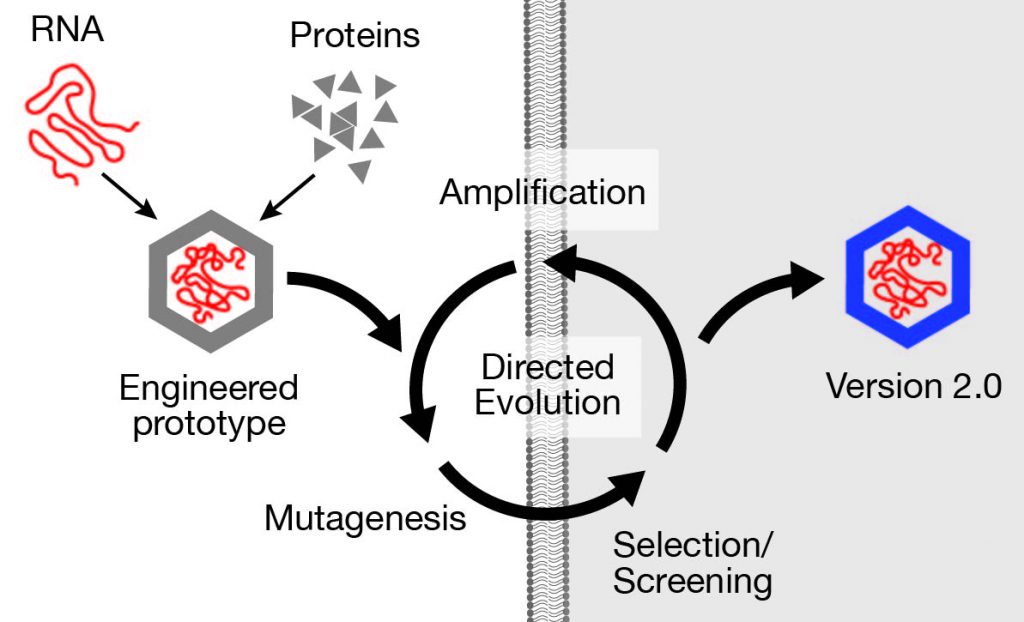The Delivery Challenge
Gene therapy holds immense promise for treating diseases, yet effective delivery remains the pivotal bottleneck. At the Laboratory of Biomolecular Engineering and Nanomedicine (LIBN), we tackle this challenge by designing minimal RNA nanocarriers inspired by how viruses package and transport their genomes. Our aim is to harness evolutionary principles, along with rational engineering, to develop versatile, precisely targeted RNA delivery systems.

Capsid Engineering
We aim to expand the available gene nanocarrier toolkit to address diverse disease contexts. By building complexity from the ground up—starting with capsid-forming proteins and a single gene encoding a single capsid subunit—we aim to establish highly controlled platforms for exploring packaging capacity, cellular uptake, and endosomal escape. We also investigate the metastability and assembly–disassembly properties of these nanocarriers to understand the fundamental principles that will eventually enable safe and efficient RNA delivery.
Directed Evolution
Because capsids present a direct genotype–phenotype link, we can select—rather than merely screen—large libraries of variants to discover entirely new geometries and capabilities. This approach allows us to evolve nanocarriers with greater packaging capacity and improved cell permeability. By recreating the key steps of molecular evolution in simplified systems, we glean fundamental insights into how biological systems optimize complex traits. At the same time, we continually refine our capsid platforms for more efficient delivery of therapeutic RNA.
RNA Delivery
Delivering functional RNA to the desired cell or tissue involves numerous steps: cargo packaging, cellular uptake, endosomal escape, and precise RNA release. We systematically engineer each of these stages, complementing in vitro encapsulation approaches (which accommodate modified nucleosides and customized RNA elements) with directed evolution to achieve robust and flexible delivery. Underpinning this work are assays to quantify critical bottlenecks such as endosomal escape, so that we can constantly improve the performance and safety of our bottom-up designed nanocarriers.
Keywords: protein design, biomolecular engineering, directed evolution, drug delivery, RNA delivery, chemical biology